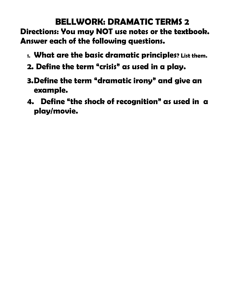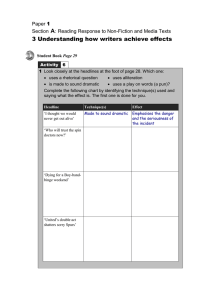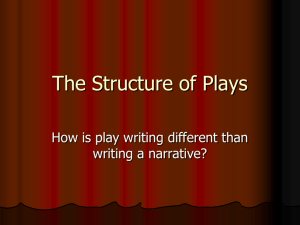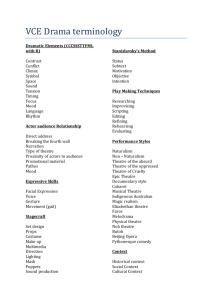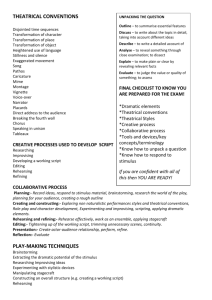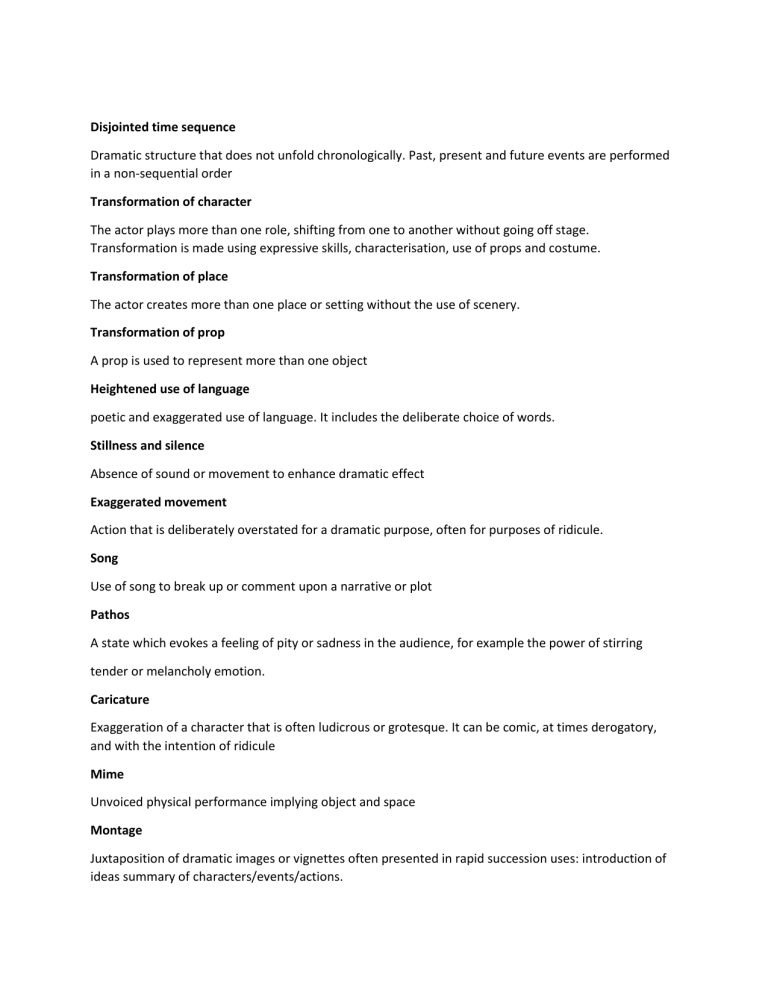
Disjointed time sequence Dramatic structure that does not unfold chronologically. Past, present and future events are performed in a non-sequential order Transformation of character The actor plays more than one role, shifting from one to another without going off stage. Transformation is made using expressive skills, characterisation, use of props and costume. Transformation of place The actor creates more than one place or setting without the use of scenery. Transformation of prop A prop is used to represent more than one object Heightened use of language poetic and exaggerated use of language. It includes the deliberate choice of words. Stillness and silence Absence of sound or movement to enhance dramatic effect Exaggerated movement Action that is deliberately overstated for a dramatic purpose, often for purposes of ridicule. Song Use of song to break up or comment upon a narrative or plot Pathos A state which evokes a feeling of pity or sadness in the audience, for example the power of stirring tender or melancholy emotion. Caricature Exaggeration of a character that is often ludicrous or grotesque. It can be comic, at times derogatory, and with the intention of ridicule Mime Unvoiced physical performance implying object and space Montage Juxtaposition of dramatic images or vignettes often presented in rapid succession uses: introduction of ideas summary of characters/events/actions. Addressing the audience The actor speaks directly to the audience, either as their character or as the actor stepping out of character. Satire The use of wit and comedy to attack, denounce or deride a target. Dramatic metaphor Heightened symbolic use of word, object or gesture beyond the literal meaning. Lyrical Use of verse, heightened song or movement, including the use of poetic imagery Narration Direct address where plot elements are conveyed Symbol Minimalist focus on objects to represent ideas
